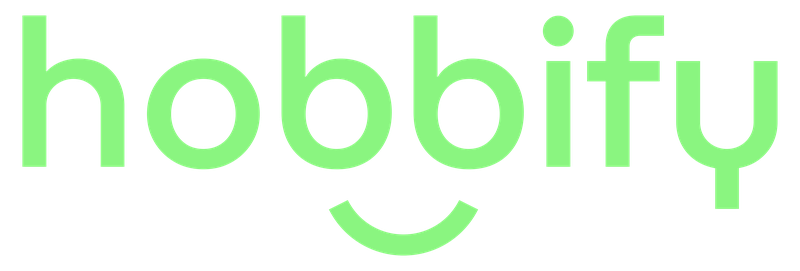Want to learn a new language in 30 days? Start with this simple, step-by-step plan.
Here’s what you’ll achieve:
- Build a foundation (Days 1-5): Set up tools, learn basic words, and create a study schedule.
- Expand skills (Days 6-15): Focus on grammar and grow your vocabulary.
- Practice speaking (Days 16-25): Improve listening and speaking with apps like iTalki or HelloTalk.
- Review and plan ahead (Days 26-30): Reflect on progress and adjust your goals.
Use apps like Duolingo or Babbel, track your progress daily, and stay motivated with small rewards. This guide will help you stay consistent and build habits that last.
How to learn any language easily
Daily Steps for the First 30 Days
Starting your language learning journey? Here’s a simple, step-by-step plan to guide you through the first month. Each phase builds on the last, so stick to the schedule and watch your progress grow.
Days 1-5: Building a Solid Foundation
Start strong by setting up your learning tools and tackling the basics. Here’s what to focus on each day:
| Day | Task | Action Plan |
|---|---|---|
| 1 | Assessment | Take a placement test and choose an app |
| 2 | Basic Vocabulary | Memorize 20 common words |
| 3 | Simple Phrases | Learn greetings and key expressions |
| 4 | Study Plan | Create a study schedule |
| 5 | Resource Setup | Install your app and complete the first lessons |
Days 6-15: Growing Vocabulary and Understanding Grammar
Dedicate 20-30 minutes daily to grammar practice using apps like Babbel. Pair this with vocabulary review through tools like Anki or flashcards. Focus on practical topics that you’ll use often:
- Words related to daily routines, food, transportation, and telling time.
Days 16-25: Improving Listening and Speaking Skills
Now it’s time to focus on real-world communication. Start with podcasts to improve listening comprehension. For speaking, use platforms like iTalki or HelloTalk to connect with native speakers. Aim for this daily routine:
- 15 minutes of listening practice
- 10 minutes of speaking
- 5 minutes to review vocabulary or grammar
Days 26-30: Reviewing and Planning Next Steps
Wrap up the month by reflecting on your progress and fine-tuning your approach. Use this time to:
- Go over vocabulary lists and grammar rules.
- Record yourself speaking to track improvement.
- Adjust your goals and plan for the next phase.
Tools and Resources for Language Learning
Top Apps and Platforms
Using the right tools can make learning a new language much easier and more enjoyable. Here’s a quick look at some popular apps, tailored to different learning preferences:
| App | Best For | Key Features | Price |
|---|---|---|---|
| Duolingo | Beginners | Gamified lessons, stories | Free |
| Babbel | Structured Learning | Short lessons, translations | Subscription |
| Mondly | Visual Learners | Interactive exercises | Subscription |
| Pimsleur | Audio Learning | Driving mode, offline content | Subscription |
| Busuu | Goal-oriented Learning | Study plans, progress tracking | Subscription |
Books and Learning Guides
While apps provide interactive exercises, books can deepen your understanding. Titles like Fluent Forever by Gabriel Wyner and the Language Hacking series by Benny Lewis focus on practical tips, such as memory techniques, improving pronunciation, and mastering conversational skills.
Immersive Media for Practice
Real-world content is an excellent way to sharpen your skills while enjoying the process.
- Podcasts for Beginners: Shows like Coffee Break and News in Slow are perfect for learners, offering simplified lessons and discussions on current events.
- Streaming Content: Watching TV shows or movies in your target language can improve your listening skills and help you pick up cultural nuances.
These tools and resources work hand-in-hand with daily practice to keep you consistent and moving forward. Finding what works best for you can make the process not only effective but also fun.
sbb-itb-7cb3038
How to Stay Motivated
Motivation drives consistency, which is crucial for sticking to your 30-day language learning plan.
Setting Small Goals and Rewards
Instead of aiming for fluency right away, focus on smaller, daily goals. Break your objectives into bite-sized tasks, like learning 10 new words or completing one grammar lesson each day. Celebrate your progress with simple rewards – take a break, watch a movie, or hang out with friends after reaching your targets.
| Milestone | Example Goal | Suggested Reward |
|---|---|---|
| Daily | Finish one lesson | Enjoy a 15-minute break with your favorite playlist |
| Weekly | Learn 50 new words | Watch a movie in the target language |
| Monthly | Have a 5-minute conversation | Attend a language meetup |
Joining Language Learning Groups
Connecting with other learners can keep you motivated. Join online communities like r/languagelearning for advice, resources, and encouragement [1]. Platforms like Tandem or HelloTalk allow you to practice with native speakers, giving you real conversation experience and cultural knowledge.
Tracking Progress and Celebrating Success
Keep a record of your journey using apps or journals. Track your daily streaks, log study time, and reflect on your achievements each week [2]. You could also record short speaking videos or monitor how many new words you’ve mastered to see how far you’ve come.
Focus on how much you’ve improved rather than dwelling on setbacks. If you encounter challenges, pause and reassess your methods instead of feeling discouraged.
With these strategies, you can stay motivated and make your first 30 days a strong stepping stone toward your language goals.
Wrapping Up and Looking Ahead
Your 30-Day Plan at a Glance
The first month of your language learning journey has set the stage with daily, focused practice. Here’s a quick recap of your progress:
| Phase | Days | Focus Area |
|---|---|---|
| Foundation | 1-5 | Learning tools and basic phrases |
| Core Learning | 6-15 | Expanding vocabulary and mastering grammar |
| Active Practice | 16-25 | Developing speaking and listening skills |
| Review | 26-30 | Assessing progress and planning ahead |
Daily practice plays a huge role in language learning success, as highlighted by Duolingo’s user data [2]. With these steps completed, you’re well-prepared to move forward in your journey.
Keep the Momentum Going
The habits and skills you’ve built over the last month are just the beginning. Now’s the time to broaden your methods and keep challenging yourself to stay motivated.
What’s Next?
- Add regular speaking practice to your weekly schedule.
- Use tools and resources that fit your personal learning style.
- Gradually introduce more complex material to keep growing.
Think of language learning as a long-term commitment rather than a quick task. The secret is to make it a natural part of your daily routine. By staying consistent and steadily increasing the difficulty, you’ll keep progressing toward fluency.
FAQs
How to learn a language in 30 days?
If you’re aiming to pick up a language in just 30 days, here’s a week-by-week plan to help you get started:
| Week | Focus Area | Key Activities |
|---|---|---|
| Week 1 | Foundation | Set clear goals, learn the alphabet, and practice pronunciation. |
| Week 2 | Basic Skills | Focus on essential phrases and basic grammar rules. |
| Week 3 | Practice | Engage in daily conversations and expand your vocabulary. |
| Week 4 | Review | Evaluate your progress and strengthen your learning habits. |
Start with the Right Tools
Pick tools that fit your learning style and schedule. Apps can help you build a foundation, but pair them with speaking practice and activities like watching videos or listening to music in your target language [2].
Set Clear Goals
Define what you want to achieve in these 30 days. For example, aim to hold basic conversations or understand simple grammar patterns [1].
Key Tips for Success
- Focus on the basics – alphabet, pronunciation, and grammar – in the first week.
- By Week 2, start practicing speaking with native speakers or language partners.
- In Week 3, immerse yourself in the language through media like podcasts or songs.
- Make time every day to review and reinforce what you’ve learned.
Make the Most of Your 30 Days
Blend structured lessons with real-life practice. Stay consistent, and prioritize progress over perfection. These 30 days are just the start of your language learning journey – use this momentum to keep building your skills and confidence!









